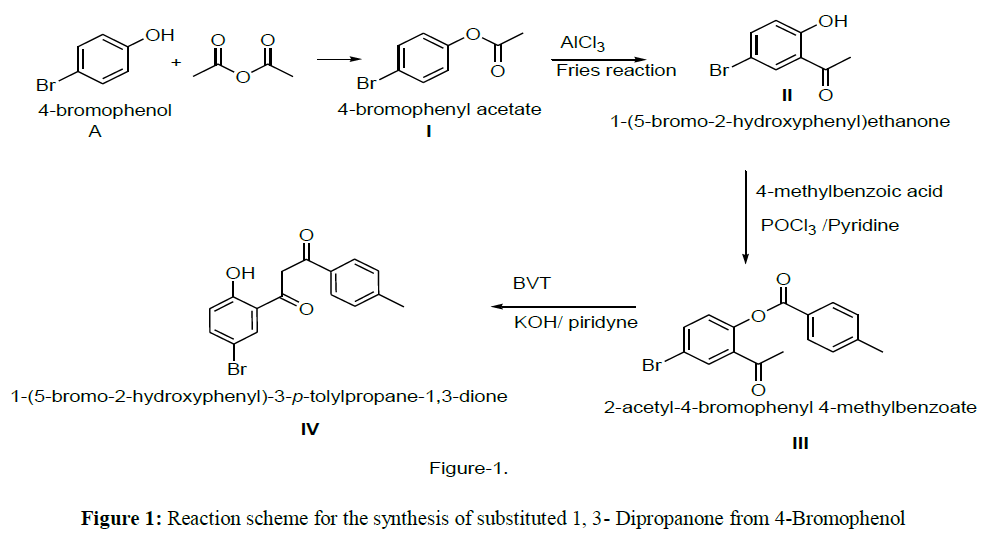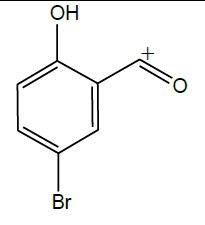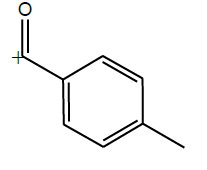Research Article - Der Pharma Chemica ( 2022) Volume 14, Issue 5
Synthesis of Substituted 1, 3- Dipropanone Containing Phenol Group Synthesized From 4-Bromophenol
Dongapure A.C1* and Choudhari P.P2Department of Chemistry, G.S Tompe College, Amravati, M.S., India
Dongapure A.C, Department of Chemistry, Shankarlal Agarwal Science College Salekasa Dist Gondia, M.S., India, Email: avinashdongapure888@gmail.com
Received: 30-Mar-2022, Manuscript No. dpc-22-59067; Editor assigned: 02-Apr-2022, Pre QC No. dpc-22-59067; Reviewed: 16-Apr-2022, QC No. dpc-22-59067; Revised: 26-Apr-2022, Manuscript No. dpc-22-59067; Published: 03-May-2022, DOI: 10.4172/0975-413X.14.5.24-27
Abstract
A 1, 3- Dipropanone is a molecule containing two ketone groups. It is used as a ligand for the preparation of various coordination complexes. In the present investigation bromo substituted diketone namely 1-(5-bromo-2-hydroxyphenyl)-3-p-tolylpropane- 1,3- dione was prepared by using a generally known method [1]. The purity of synthesized compounds was checked by the thin layer chromatography.
Keywords
1, 3- Dipropanone; 4-Bromophenol
Introduction
In chemistry synthesis of 1,3-diketones is more important because it is key intermediates synthesis of Carbon-Carbon bonds in a vast quantity of biologically and pharmaceutically products. Their various properties like availability, stability make β-diketones useful in a number of areas of the human being. Various β-diketones were very reactive with those β-diketones which are structurally similar to natural products. The researchers who are doing research in numerous fields of medicinal chemistry and coordination chemistry are interested in β-diketones moieties [2,3]. In multistage reactions for the synthesis of biologically active compounds, β-diketones are used as intermediates reactions, in mainly regio- and stereoselective synthesis [4,5]. In coordination, chemistry compare to other ligands the β-diketones ligand is used most frequently [6,7]. Because of tautomerism (keto- enol) and twice oxygen donor atoms and facile [8], hence β-diketones as a ligand simply coordinate with metal ions and form a six-membered chelate complex [9]. Last few years, in physical chemistry studies metal complexes synthesized by β-diketones as a ligand, have been used as model complexes. β-diketones and their moieties have been used as chelating ligands for the lanthanides and transition metals [10]. They are bidentate ligands with the possibility of complexation with almost all the metal ions [11]. Volatility [12], lewis acidity or aggregation state [13], standard molar enthalpies of sublimation and formation, vapor pressures [14], and enantioselective catalytic have been reported of various moieties of β-diketones [15, 16]. Biological activities of β-diketones particularly antioxidants [17], antitumor [18,19], and antibacterial activities [20], and β-diketone act as a vital mediator to synthesize numerous heterocyclic compounds [21,22]. It was therefore thought interestingly to use 4-Bromophenol to synthesize new and novel substituted 1, 3- Dipropanone. Hence, the present work deals with the synthesis of a new substituted 1, 3- Dipropanone from 4-Bromophenol, its characterization by IR, PMR, and Mass spectral data.
Experimental
The melting points were recorded using Thiel’s tube containing parafine oil and a thermometer. The IR spectrum was recorded in KBr pellets. The NMR spectra were recorded using DMSO as solvent and TMS as an internal standard. The product was purified by recrystallization and their purity was tested by thin-layer chromatography on silica layers. Synthesis of Substituted 1, 3- Dipropanone involves the following preparatory steps:
Preparation of 4-Bromophenyl acetate (I)
Initially, acetic anhydride in presence of anhydrous sodium acetate is heated with 4-Bromophenol (A) for an hour and allow to cool at room temperature and then pour ice-cold water. Separate the water organic layer using a separating funnel which was purified by distillation to obtain 4- Bromophenyl acetate (I).
Preparation of 1-(5-bromo-2-hydroxyphenyl)ethanone (II)
When 4-Bromophenyl acetate (I) was going through the Fries rearrangement in presence of anhydrous AlCl3 gives 1-(5-bromo-2- hydroxyphenyl)ethanone (II).
Preparation of 2-acetyl-4-bromophenyl 4-methylbenzoate (III)
1-(5-bromo-2-hydroxyphenyl) ethanone (II) and 4-methylbenzoic acid were dissolved in pyridine and POCl3 was added drop by drop with constant stirring till the viscous mass is obtained. Maintain the temperature below 10ºC during the addition of POCl3 to the reaction mixture. The reaction mixture was kept overnight at room temperature and then decomposed by 10% HCl. The product thus separated and was filtered, washed with water followed by 10% NaHCO3 solution, and then again with water. Finally, it was crystallized from ethanol to obtain 2-acetyl-4-bromophenyl 4- methylbenzoate (III).
Preparation of 1-(5-bromo-2-hydroxyphenyl)-3-p-tolylpropane-1,3-dione through Baker-Venkataraman transformation (IV)
2-acetyl-4-bromophenyl 4-methylbenzoate (III) was dissolved in pyridine (40 ml). The solution was warmed up to 60ºC and pulverized KOH was added slowly with constant stirring. After 4 hours the reaction mixture was acidified by ice-cold dil.HCl (1:1). The solid product thus separated was filtered, washed with 10% NaHCO3, and finally several times with water. It was then recrystalized from ethanol to obtain 1-(5-bromo-2- hydroxyphenyl)-3-p-tolylpropane-1,3-dione (IV). The reaction scheme for the synthesis of substituted 1, 3- Dipropanone from 4-Bromophenol is shown below in Figure-1.
Results and Discussion
The physical and analytical data of synthesized substituted 1, 3- Dipropanone (IV) is given in Table-1, and their IR, PMR, and Mass spectral data are illustrated in Table-2, 3, 4 respectively.
| Formula | Exact Mass | Mol. Wt. | Melting Point | % Yield |
Elements (%) |
C | H | O |
|---|---|---|---|---|---|---|---|---|
| C16H13BrO3 | 332 | 333.18 | 618.84 [K] | 70 | Observed | 54.90 | 3.69 | 18.26 |
| Calculated | 55.01 | 3.75 | 18.28 |
| Literature value cm -1 | Frequency cm -1 | Assignment |
|---|---|---|
| 3650-3600 | 3648 | Ar-OH stretching (free) |
| 3000-2850 | 2949 | C-H stretching (Aliphatic) |
| 1725-1675 | 1687 | C=O (Ketonic) |
| 1600-1500 | 1558 | C=C (Aromatic) |
| 1300-1000 | 1263 | C-O stretch |
| < 667 | 616 | C-Br stretch |
| Peak observed | Muliplicity | No. of Proton | Assignment |
| 2.35 | Singlet | 3H | Ar-CH3 |
| 3.7-3.9 | Singlet | 2H | 0 |
| 4.7 | Singlet | 1H | Phenolic -OH |
| 6.73 | Doublet | 1H | Aromatic-H |
| 7.45 | doublet | 1H | Aromatic-H |
| 7.86 | Singlet | 1H | Aromatic-H |
| 7.74 | doublet | 2H | Aromatic-H |
| 7.17 | doublet | 2H | Aromatic-H |
| m/e value | Probable fragments |
|---|---|
| 331.00 | [C16H13BrO3]+ |
| 199.90 |
|
| 120.12 |
|
133.01 |
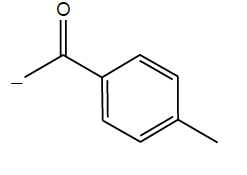 |
| 213.00 | 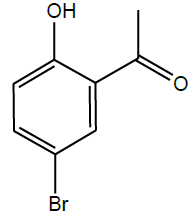 |
| 15 | CH3 |
| 410 | Due to impurity |
Acknowledgment
The author is thankful to Principal, G.S Tompe College, Amravati for necessary facilities.

